Princess Cruises
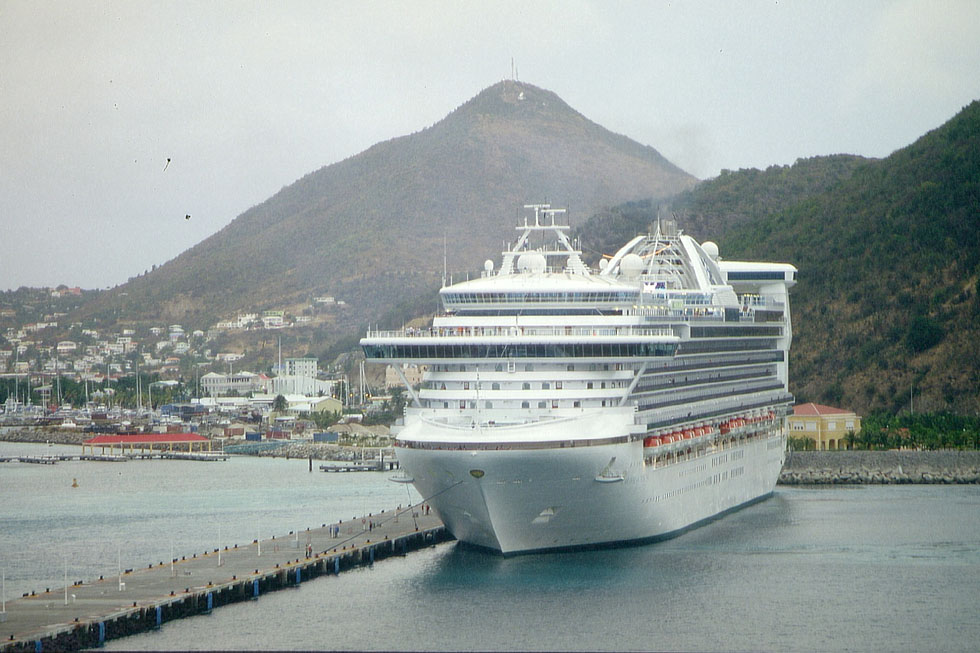
“Caribbean Princess”, Grand class, St.Maarten 2007 (WS)
The company, now the second-biggest within the Carnival Corporation, was created by Stanley McDonald in 1965. In the beginning, cruises from Los Angeles with the “Princess Patricia” were offered. In 1967 the “Italia” (1967/ 12,219 gt), built for Sunsarda, was chartered as “Princess Italia” (in 1973 used by Costa and after half a dozen changes of name becoming the “Sapphire” of Louis). It was in 1968 on board the “Carla C”, chartered by Princess Cruises and undertaking Panama voyages, that Jeraldine Saunders was inspired to write “The Love Boat”, later a famous TV series. The “Pacific Princess” and “Island Princess”, used in that series, were the former “Sea Venture” (1971/19,903 gt) and “Island Venture” (1972/19,907 gt), built at Emden for Norwegian Cruiseships, operating for Flagship Cruises. In 1974 they were bought by P&O and integrated into the Princess Cruises fleet.
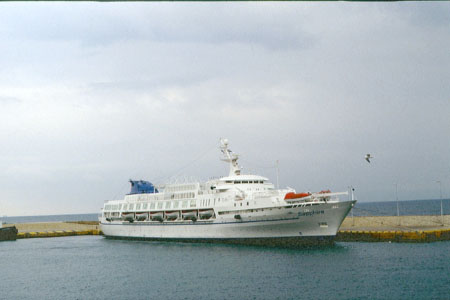
“Sapphire” of Louis Cruises, the former “Italia”, “Princess Italia”, Piraeus 2010 (WS)
|
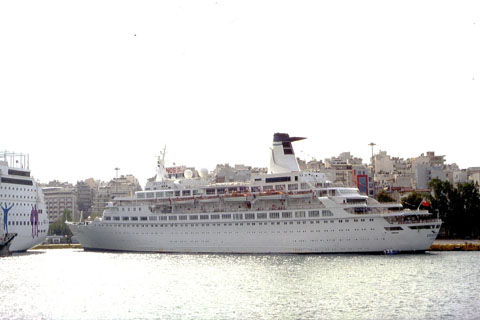
“Discovery”, the former “Island Venturer”, “Island Princess”, Piraeus 2009 (WS)
|
In 1974 P&O Lines had acquired Princess Cruises. For the U.S. market a new 44,348 gt ship was introduced in 1974, the “Royal Princess”, the interior styled by Ellerbe Becket Associates of Los Angeles. Princess Cruises got a substantial boost when its parent company P&O bought Sitmar Cruises in 1988. Two former 22,000-ton Cunard steamers, the “Carinthia” and her sister “Sylvania”, became the “Fair Princess” and “Dawn Princess”. One of the last steamers built was the “Fairsky” (1984/38,876 gt), used by Sitmar for Alaska cruises, then renamed “Sky Princess”. Uncompleted vessels taken over were the “Star Princess” (63,524 gt, ex “Sitmar Fairmajesty”), the “Crown Princess” (68,845 gt) and her sister “Regal Princess”, introduced between 1989 and 1991. “Crown Princess” and “Regal Princess” are the innovative ships built by Fincantieri with a domed observation lounge, glassed in by panoramic windows, designed by architect Renzo Piano, suitable especially for Mediterranean cruises.
When new ships were put in service, beginning in 1995 with the Sun class, the old fleet was either given away or transferred within the P&O group. The “Pacific Princess” and the “Island Princess” of 1971/72 had a long career. “Pacific Princess” was sold to Pullmantur in 2002 and also “Island Princess”, bought in 1999 by Hyunday, survived until the 21st century, changing name and ownership half a dozen times. In 2009 the ex-“Pacific Princess”, operating as “Princess” for Quail Cruises, was seized by the Italian coast guard. The ex-“Island Princess” was purchased in 2003, after several changes in ownership, by Voyages of Discovery, a part of the All Leisure Group, baptized “Discovery”. All these changes cannot be a matter of this worldwide survey.
The Sun class with the characteristic funnel led the way toward the typical Princess design. The “Grand Princess” was for some time world’s biggest passenger ship, designed by Giacomo Mortola, from 1974 already responsible for Princess Cruises’ ship design. The interior was styled by Teresa Anderson. ‘Travelators’ convey passengers in a fantastic Skywalk to an observation lounge high above the very steep stern. With the Coral and the Diamond class, the elevated club went down to deck, placed just behind the funnel with its pair of purely decorative ‘jet pods’. Around 2011 the “Grand Princess” was the first ship losing the Skywalk. In 2002 two second-hand 30,277 gt vessels were added, the “Pacific Princess” (ex “R Three”) and the “Tahitian Princess”, then “Ocean Princess” (ex “R Four” of bankrupt Renaissance Cruises), joined in 2007 by the “Royal Princess” (ex “R Eight”). The fleet is cruising in the seas surrounding the Americas (in Alaska the Midnight Sun Express train started in the 80s and in the new century the Direct-to-the-Wilderness train), in the Mediterranean, on the Pacific Rim and offers also worldwide circumnavigations.
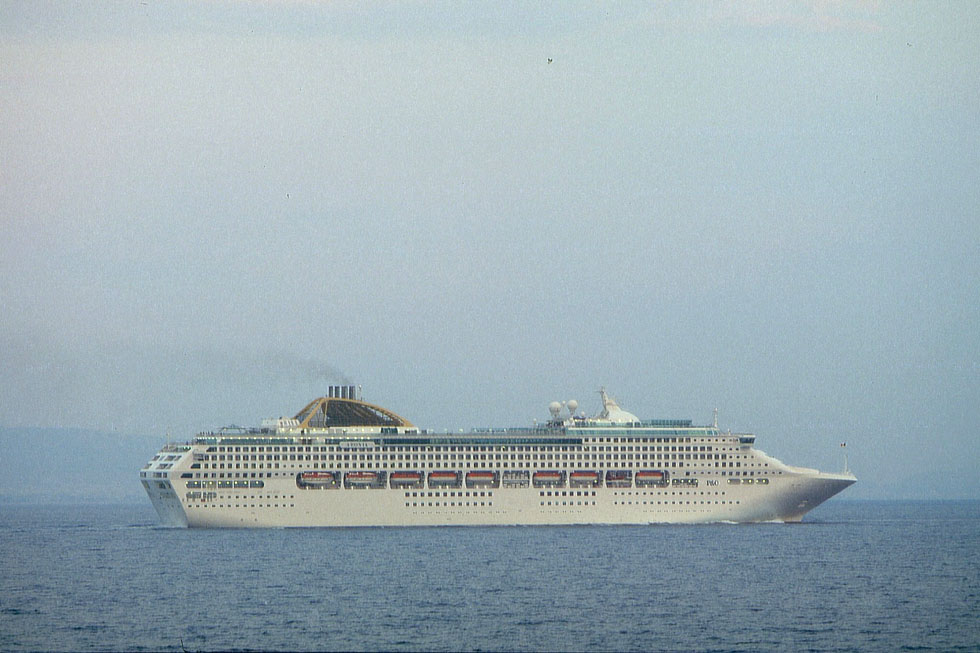
“Sea Princess” of the Sun class, cruising as “Adonia” for P&O, leaving Piraeus, 2003 (WS)
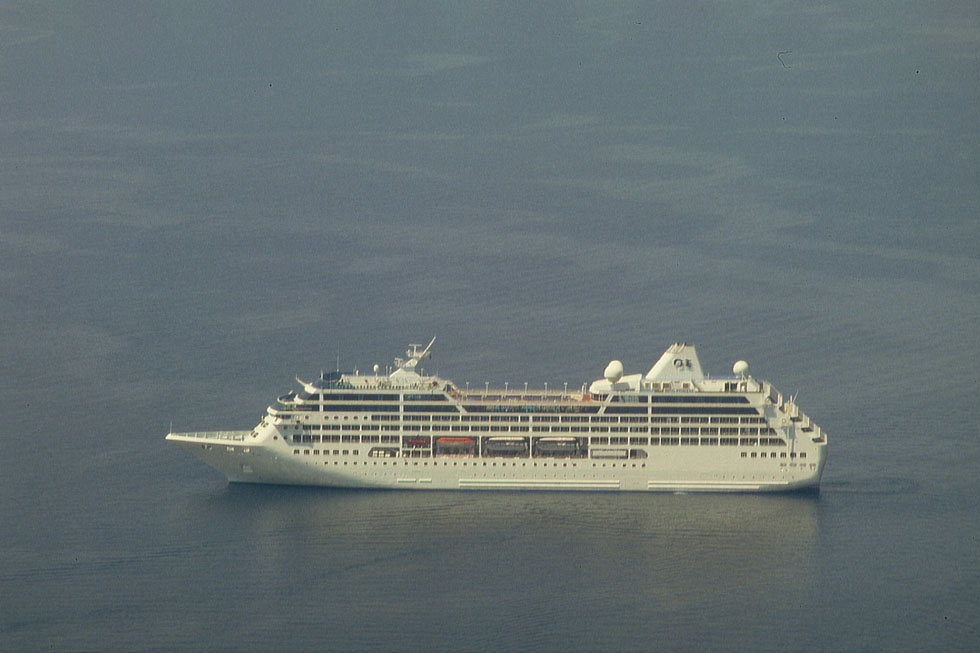
“Royal Princess”, ex “R Eight”, Santorini 2007 (WS)
In 2003 Princess Cruises together with the parent company P&O Cruises was sold to the Carnival Corporation, becoming its number two in size. Princess’s appearance and conservative interior design continued with the extended Grand class half-sisters. In 2009 a prototype based on the “Ruby Princess” was announced. Then two 141,000-ton megaships of a new prototype, with a glassed ‘sea walk’ 40 meters above the sea, were ordered from Fincantieri. The “Royal Princess” entered Mediterranean cruises in 2013, and the “Regal Princess” is the next ship of that class.
Ships delivered since 1995:
Sun class
Fincantieri: “Sun Princess (1995/77,441 gt), “Dawn Princess” (1997/77,441 gt), “Sea Princess” (1998/77,499 gt), “Ocean Princess (2000/77,499 gt).
Grand class
Fincantieri: “Grand Princess” (1998/108,806 gt), “Golden Princess” (2001/108,865 gt), “Star Princess” (2002/108,977 gt), Caribbean Princess” (2004/112,894 gt, with one extra deck).
Coral class
Chantiers de l’ Atlantique, diesel and gas turbine engines: “Coral Princess” (2002), “Island Princess” (2003/91,627 gt each).
Diamond class
Mitsubishi, diesel and gas turbine engines: “Sapphire Princess”, “Diamond Princess” 2004/115,875 gt each, names exchanged).
Extended Grand class
Fincantieri, observation lounge relocated: “Crown Princess” (2006/117,744 gt), “Emerald Princess” (2007), “Ruby Princess” (2008).
Royal class
Fincantieri: “Royal Princess” (2013/142,229 gt), “Regal Princess” (2014/142,700 gt)
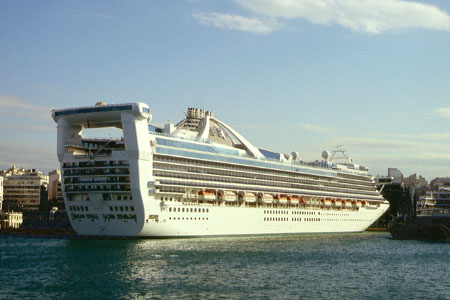
“Golden Princess”, Grand class, Piraeus 2006 (WS)
|
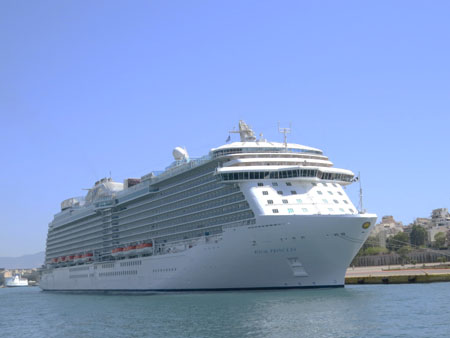
“Royal Princess”, Royal class, Piraeus 2013 (WS)
|
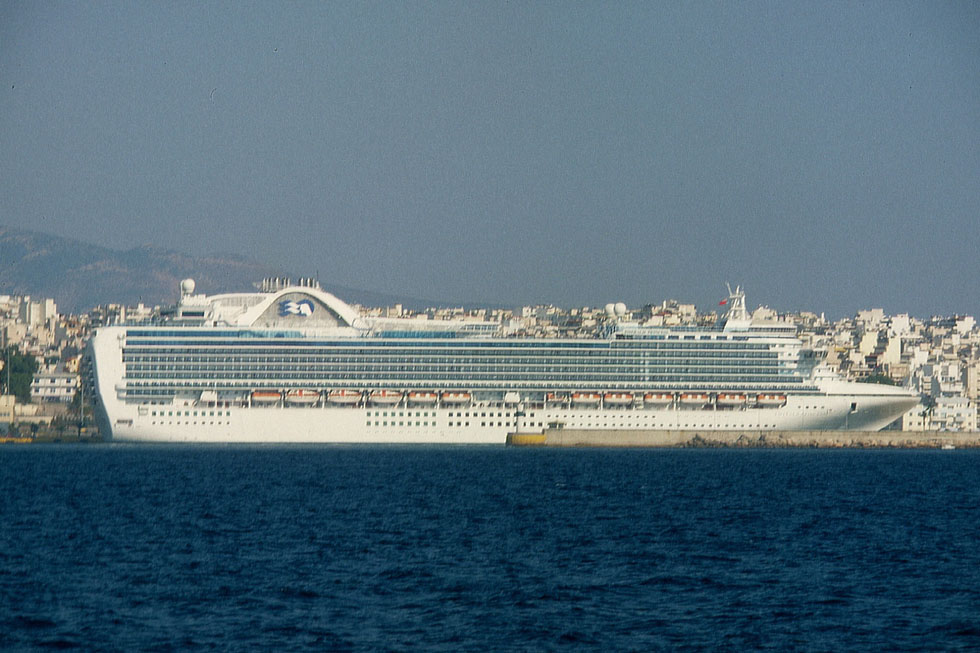
“Emerald Princess”, Extended Grand class, Piraeus 2008 (WS)
|